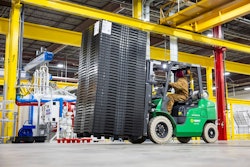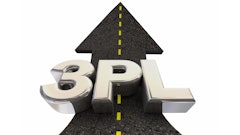
Advanced vision AI is unlocking automation for even the most challenging use cases with unprecedented reliability. While many tasks were at least partially automated a decade ago, (item/order picking in e-commerce, for example), error rates as high as 30% persisted due to inadequate vision capabilities being unable to solve problems like transparent poly bags, obscured SKUs and items that had shifted in transport. To overcome these and other challenges, vision AI programmers turned to machine learning.
With machine learning, vision AI systems could examine large volumes of data to identify patterns and make decisions, including identifying packaging materials, ideal grasp location, pick prioritization and more. While this greatly improved error rates and unlocked exciting new automation capabilities, end users, automation integrators and vision technologists need a clear understanding of when and where machine learning is best utilized in an automation implementation.
When machine learning alone isn’t enough
If applied to the right processes and vision situations, machine learning and AI can take accuracy rates closer to 100%, but the overhead involved to teach the neural networks and the performance costs of using AI for every operation should be clearly understood. Machine Learning’s greatest capability is also one of its biggest liabilities: examining large volumes of high-quality data comes with resource costs, including:
● Training: Training machine learning can be difficult and time consuming; however, once it has learned to do something, it can be implemented and expanded upon.
● Hosting: Both the machine learning and the data set used to train it need to be hosted somewhere. Local hosting without internet connectivity restricts updates but boosts speed. Cloud hosting creates latency and increases hosting costs.
● Processing: Machine learning requires significant processing power to operate at peak efficiency. Cutting edge CPUs and GPUs handle the tasks most efficiently (NVIDIA and other innovative businesses continue to develop new cost-effective next-level computing power), but older hardware can struggle.
● Time: On its own, machine learning can process information and make decisions in an operating environment fairly quickly. But in the fast-paced supply chain world, fairly quickly can be too slow.
Managing neural networks for vision requires a lot of overhead so that overhead should always provide value. Optimizing vision in automation involves knowing when advanced vision needs the power tools of AI and machine learning to get the job done, and when it doesn't.
Optimizing machine learning
Machine learning on its own isn’t a panacea for automation, but it provides an incredible foundation. To optimize machine learning and capitalize on its incredible capabilities, vision AI companies have turned to cascade learning. Cascade learning introduces human-like image processing by teaching vision AI to process scanned data from images according to a cascading set of considerations in milliseconds. Operators control what, how and when robots learn, including which variables to consider and in what order, removing the need to unlearn incorrect behaviors and staying on point.
Cascade learning provides filters for machine learning, boiling down the data it examines and the proposed solutions it produces to what’s most important in any given scenario. With Cascade learning, operators can create small, specialized networks for speed and efficiency tailored to the task being automated. This can limit the processing power and data required, shrink hosting demands, and most importantly, deliver ultra-fast decisions.
In many scenarios, cascade learning for robotic automation keeps machine learning focused to boost performance.
After a camera captures an image, machine learning uses segmentation, shape detection and material detection to identify the task at hand. Segmentation allows the robot to understand where one item ends and another begins, and shape detection clarifies how much space each item takes up on a three-dimensional plane, whether it’s a box or an envelope, etc. Material detection allows the robot to know what each item is made of, whether that’s cardboard, poly bag, a hard plastic container or something different.
Cascade learning makes its most impactful contribution during this next phase, prioritization, when cascading layers of consideration must be taught and incorporated into the underlying algorithms. During prioritization, cascade learning combines two-dimensional and three-dimensional data and uses sequencing to determine which items are on top of others. It analyzes the surface of each item to locate the flattest, largest, sturdiest or otherwise most desirable surfaces with which to work. It also considers whether its gripper will have adequate room to move, where it must begin its task, etc., all in milliseconds.
Once all of this is complete, the system then sends instructions to the robot, including pick positions, the proper approach angle, the correct gripper options and more.
Without cascade learning, machine learning would lag behind, focusing on irrelevant data, proposing more solutions than necessary and creating bottlenecks.
Machine learning + cascade learning in action
The combination of machine learning and cascade learning has enabled vision AI to reliably tackle a variety of tasks in the supply chain and logistics world, including palletization/depalletization, singulation, pick and place, trailer/container unloading, detection and more.
Machine learning is an invaluable tool for robotic automation and has unlocked new and exciting capabilities. Without machine learning, it’s unlikely that automation providers would have developed picking cells capable of reliably handling transparent polybags in high-variability, mixed-material environments.
Automating today’s most complex, real-world scenarios, however, requires more than machine learning. The most effective systems utilize AI and machine learning in combination with basic vision to enable highly performant, flexible vision applications that solve problems in real-world situations. Approaches like cascade learning provide the focus required to perform at high-levels that raise productivity. If machine learning opened the door for advanced robotic automation, cascade learning turned on the lights.




















